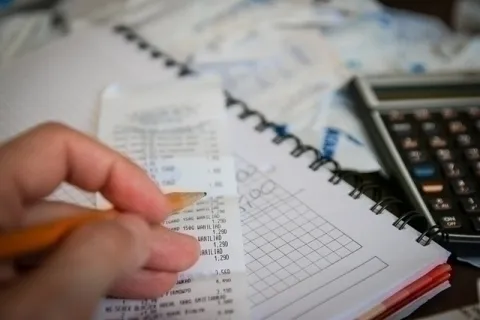- Apply the Stochastic Oscillator by setting the typical time frame at 14 periods to identify overbought or oversold conditions in the market.
- Look for a crossover of the %K (fast line) and %D (slow line) above 80 for overbought signals, or below 20 for oversold signals.
- Combine Stochastic signals with other indicators or chart patterns to increase the reliability of the trading signals.
Been messing around with different analysis tools and one caught my eye. The Stochastic Oscillator, sounds super complicated. Has anyone here used it for market analysis? Could use some pointers to get me started. What's your experience with it? Are there pitfalls I should be aware of or any tips on using it effectively? Much appreciated!
Totally agree with the points made. Just wanted to add, using the oscillator in combination with other indicators can help cross-verify the data, leading to more solid decisions. Have also seen it work quite well for short-term trading. May want to explore that avenue!
Absolutely, these are all great inputs. I'd just like to chip in and mention how beneficial I've found the relative timing of the Stochastic Oscillator to be. I've noticed that often when there's a shift, it's frequently ahead of the actual market move. So, it's like getting an early warning signal of sorts. Meanwhile, divergences, either positive or negative, can sometimes throw up intriguing opportunities. You might want to keep an eye out for those. Hope this adds to our discussion!
Haha, loving the chat around the Stochastic Oscillator. Fear it's turning us all into hardcore analysis nerds! Have you guys ever thought about setting our dinner dates or choosing our weekend breaks based on stochastic readings? Could be fun! Anyway, on a serious note, remember, it's not a bullet-proof strategy. Be cautious with oversold levels during an uptrend and vice versa. Because, you know, the market can stay irrational longer than we can stay solvent. Keep that in mind while playing around with this tool. Onwards and upwards, my friends!
Really loving the vibe here. Your inputs are enriching, to say the least! Piling on to what's been said, let's not forget that the Stochastic Oscillator can serve as a reality check of sorts. If we're tempted to get carried away by a sudden price movement in the market, the Oscillator can help ground us by showing whether the movement is supported by significant traction or if it's just a short-lived phenomenon. Also, one little quirk I've found useful is observing the Oscillator in different time frames - it's a perspective shift that can sometimes throw up surprising insights! Keep tossing these views around folks, we're really drilling down here!
Well, isn't this thread a goldmine of Oscillator wisdom? Just don't end up like me – analyzing those crossovers and divergences so much you start seeing them in the clouds, or worse, your morning coffee swirls! Though I gotta say, that'd be one heck of a 'latte' prediction, wouldn't it? Remember to blink sometimes, and don't let the Stochastic become your only market BFF! Keep the profits high and the losses low, pals!
- How does overconfidence affect trading results? 3
- Which trading platforms are known for their high uptime and reliability? 2
- How does a trading bloc like the EU impact trade? 4
- How does the Producer Price Index (PPI) data impact the market? 8
- What tools can help me perform a fundamental analysis of a company? 2
- What are some trading platforms that allow for social trading/copy trading? 6
- Are there any tools that can help me with trading psychology and discipline? 2
- How do I deal with the fear of missing profits, or FOMP? 3
- Can you explain the concept of slippage in trading? 1
- How does seasonality impact market analysis? 4
- How do you navigate the regulations surrounding short selling? 318
- What are Forex trading and its basics? 290
- How does seasonality impact market analysis? 254
- How do you manage stress during volatile market conditions? 218
- How does a stop-loss order work in trading? 205
- What tax implications should I consider when trading? 200
- What are the best platforms for online trading? 193
- What's the difference between day trading and long-term investing? 190
- What is swing trading and how is it different from day trading? 185
- How do you avoid letting past trading successes or failures impact your future decisions? 180

We have compared the best crypto exchanges for you. Just take a look at our free crypto exchange provider comparison.

We have compared the leading crypto tax tool providers for you. Check out our free crypto tax tool provider comparison.
Blog Posts | Current

The 5 most common mistakes made by crypto traders
The 5 most common mistakes made by crypto traders Crypto trading is becoming increasingly popular, but there is great potential to...

Mastering Your Mindset: The Key to Successful Trading Psychology
As a trader, your success in the markets depends not only on your technical skills and market knowledge, but also...

Don't Fall for the Hype: The Risks of Using Trading Bots
As a beginner trader, you may have come across the idea of using trading bots to automate your trading and...

Automating Your Trades: The Power of Trading Algorithms
As an avid trader, you've probably heard the buzz around trading algorithms. But what are they, and how can they...

Protect Your Capital with Effective Risk Management in Trading
Risk Management As a beginner trader, you're likely eager to dive into the markets and start making some profits. However, before...

From Chaos to Consistency: Why a Trading Setup is Key to Success
Trading is an exciting and rewarding way to make money, but it can also be overwhelming for beginners. One of...

The Trader's Dilemma: Dealing with Losses in Trading
As a trader, losses are an inevitable part of the game. Even the most successful traders will experience losing trades...

Maximizing Returns: The Importance of Rebalancing Your Portfolio
Rebalancing your portfolio is an important part of any long-term investment strategy. It involves periodically adjusting your portfolio's asset allocation...

Breaking Down the Buzzword: What is a Trading Bloc?
Are you familiar with the term "trading bloc"? It may sound complicated, but it's actually a concept that can have...

Different Cost Average Trading Strategies
Cost Average Trading is one of the most popular trading strategies used by investors to minimize their risk and maximize...
